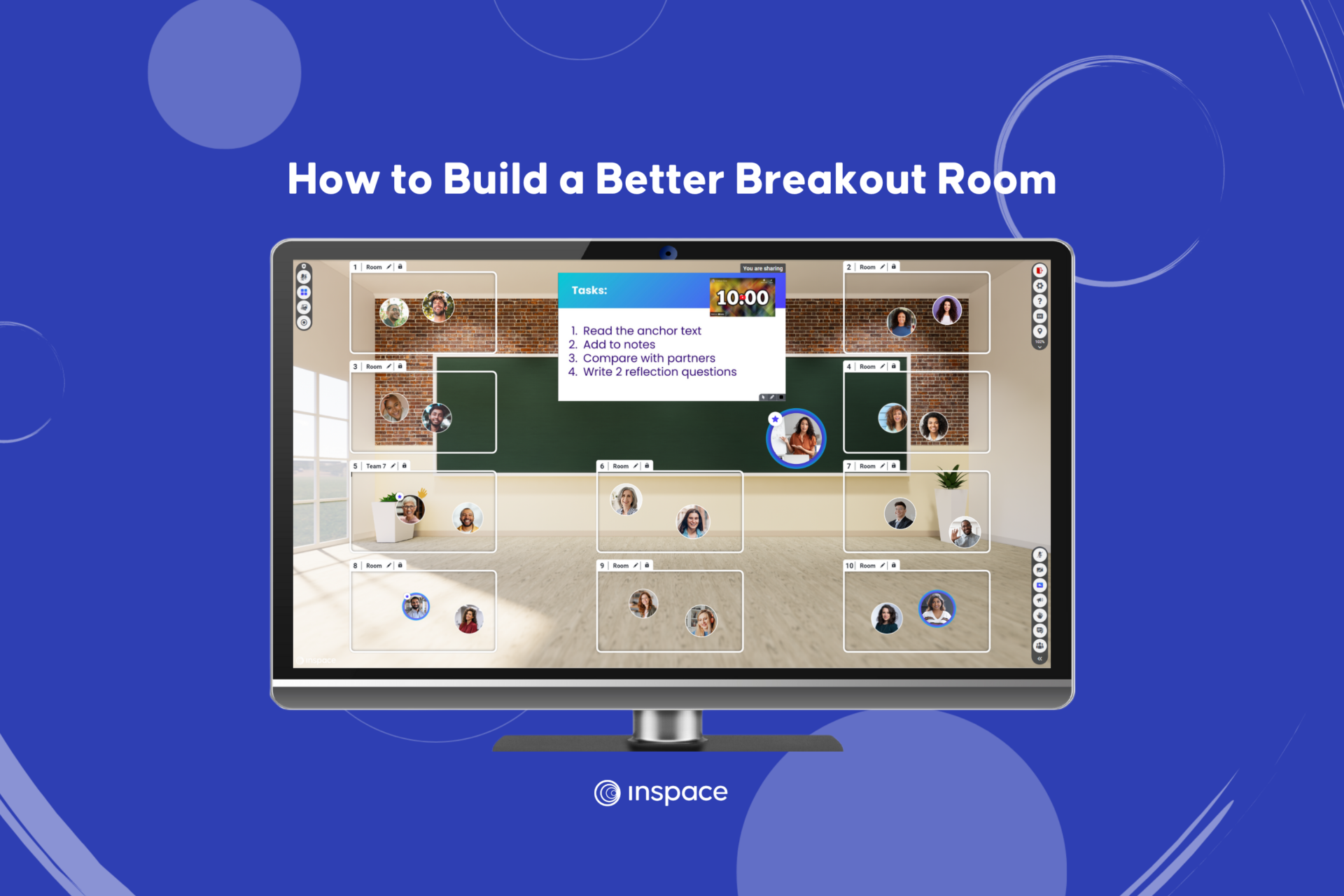
Facilitating Effective Online Discussions: How to Build a Better Breakout Room for Student Collaboration and Connection
Your classroom discussions aren’t as effective as you think.
By Audrey Dietz
‘Let’s discuss’ can unintentionally exclude most voices in the room.
On the surface, it’s simple: pose a question to the whole group for consideration.
Or, divide the class and send them off for a few minutes to chat. Ta-da! Students are engaged.
Zoom-style teaching further entrenched this unfortunate “crack-open-some-breakout-rooms-and-call-it-an-engagement-strategy” line of thinking.
It’s tempting to think changing it up for variety’s sake with a breakout room is enough to inspire student engagement.
But the truth is, without intentional planning, this practice is, at best disruptive and, at worst, actively destructive to the community of learners.
Stop leaving your discussions up to chance.
Whether you’re facilitating in-person discussion groups or coordinating virtual breakout sessions, you can create an atmosphere of community and collaboration in which all participants can contribute meaningfully.
How to Build a Better Breakout Room
1. Determine your instructional goals for the discussion.
You may not need a breakout room at all if it’s a quick check-in, informal connection, or formative assessment. For quick connects that let you move seamlessly between whole group and small group conversations, try Proximity Audio with InSpace.
If your instructional goals align with student needs (for example, students could benefit from sustained inquiry, problem-based learning, or project work in groups, and community has been established in your course), then breakout rooms are a great choice!
2. Display clear expectations before & during breakouts.
Students’ number one complaint about breakout rooms is, “I wasn’t sure what to do.”
Ensure that everyone is clear by displaying your instructions on a slide at the front of the InSpace classroom that’s visible to all students while in the breakout room (Bonus points if you use a timer to keep everyone on track too! Try Miro Presentation Mode for slides you and your students can annotate directly in the space or embed a timer into your Google or PowerPoint deck)
3. Understand the objectives of your discussion. Then, show, don’t tell.
Provide sentence stems using academic language structures relevant to your discussion. Show how to use them in writing and out loud. Consider using a short mini-fishbowl session to model academic discussion norms before beginning your planned discussion.
Make sure to share your expectations for the chat as well. The main room’s chat is visible to all students throughout their time in the breakout rooms (and they’ll also be able to direct message you at any time). Post links, share files, and even edit or delete your messages.
4. Encourage engagement in the conversation in multiple ways.
Active engagement emphasizes a student’s thinking process, often occurs in sync with peers, and promotes retaining information. Create opportunities for students to be actively engaged, even without speaking. Specifically invite students into the chat to contribute their thoughts.
Pandemic teaching has shown us that the chat is an essential backchannel conversation–consider offering backchannels during all events via InSpace Chat, Mentimeter, PollEverywhere, Padlet, or Google Slides with Q&A enabled).
5. Write to learn; write to understand.
Before launching a discussion, provide time for participants to write their thoughts on the topic. Make this a habit – most quieter contributors in your sessions already know who the talkers are and expect the conversation to be taken over before they’ll have a chance to share (read: they’re already partially disengaged).
Reset class norms around who dominates discussion with Waterfall Chats. How? All students write in the chat but don’t send until the facilitator says ‘go.’ Give time for reading the ‘waterfall’ of responses.
Or, take it a step further with a Real Talk Discussion, created by educators Caitlin Mitchell and Jessica Cannata. Students draft talking points ahead of time, then sort as a group using sticky notes to organize the conversation. Use InSpace’s embedded Miro Whiteboard to facilitate this activity.
6. Implement clear conversational routines. Learning is the variable, not tech.
The mistake many instructors make when implementing breakout rooms is assuming that the novelty of the room provides excitement and engagement for students. In fact, this often causes stress or distraction for the student and detracts from the learning itself. Breakout rooms are a valuable structure for learning when routines and protocols support student use of the tool.
This can look like structured conversational protocols or exceptionally clear routines and pedagogical choices. Leo Vygotsky (1978, in Hammond, 2014) says language is the medium by which we acquire our information. Formal and informal instructional conversations allow students to blend prior knowledge with feedback, rephrasing and expanding their ideas.
Learning is social. Try InSpace for more meaningful student engagement in discussions.